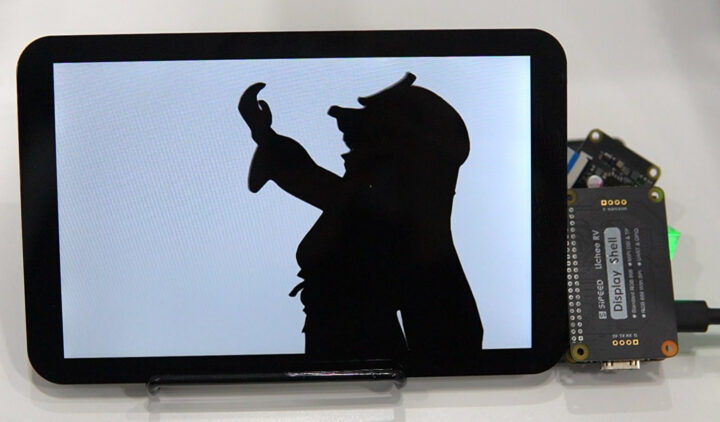Sipeed introduced the Lichee RV Allwinner D1 Linux RISC-V board going for just $17 with 512MB RAM last month. While with a USB-C port it could be used as a standalone part, its dual M.2 connector makes it more like a module and we noted a tiny carrier board was in the works at the time.
The baseboard is now available and known as the Lichee RV Dock adding HDMI and USB ports, as well as a 40-pin GPIO header for just $5, or $8 if you’d like to get Wi-Fi 4 and Bluetooth 4.2 connectivity through a Realtek RTL8723DS module.

Sipeed Lichee RV Dock specifications:
- Supported system-on-module (SoM) – Lichee RV module with Allwinner D1 RISC-V processor @ 1 GHz, 512MB DDR3, MicroSD card slot, and USB Type-C OTG port
- Storage – Optional SPI flash
- Display interfaces
- HDMI port up to 4Kp30
- Optional RGB interface for up to 720p30 display via the “Display Shell” add-on
- Optional MIPI DSI interface for up to 1080p60 display via the “Display Shell” add-on
- Audio – 3W power amplifier, 1x analog microphone, support for 6-mic array via expansion
- Connectivity – Optional WiFi 4 and Bluetooth 4.2 via Realtek RTL8723 wireless module, IPEX connector
- USB – 1x USB Type-A port adding to the USB-C OTG port on the module
- Expansion – 40-pin GPIO header
- Misc – RGB LED, Reset key, user key (ADC).
- Dimensions – 65 x 40 mm
Once you install the Lichee RV module, it becomes a tiny computer board similar to the Raspberry Pi Zero. The company offers Tina Linux based on OpenWrt 14.07, as well as Debian and Alibaba/T-head YoC RTOS images. The wiki is currently in Chinese only, but you’ll find bilingual documentation and other resources by going to the download page to access the datasheet, PDF schematics, and mechanical files. They should really release source schematics for the Dock if they want other people to develop boards for the D1 module…
As noted in the specifications, Sipeed provides some add-on for the board with a microphone array with 6 mics for smart audio applications…
… as well as a “Display Shell” allowing users to connect a (touchscreen) display thanks to RGB and MIPI DSI interfaces available on the expansion board.
If you don’t already own a Lichee RV SoM, it’s possible to buy a starter kit for $20.90 with the dock and module, or $23.90 with WiFi and Bluetooth. The Display Shell is sold for $4.28, while the microphone array goes for $16.90. The starter kit is quite interested since it’s by far the most affordable (usable) RISC-V Linux development board on the market, although I reckon it does not compete against Arm alternatives just yet in terms of price or features, but it’s getting close.
Via Liliputing

Jean-Luc started CNX Software in 2010 as a part-time endeavor, before quitting his job as a software engineering manager, and starting to write daily news, and reviews full time later in 2011.
Support CNX Software! Donate via cryptocurrencies, become a Patron on Patreon, or purchase goods on Amazon or Aliexpress







